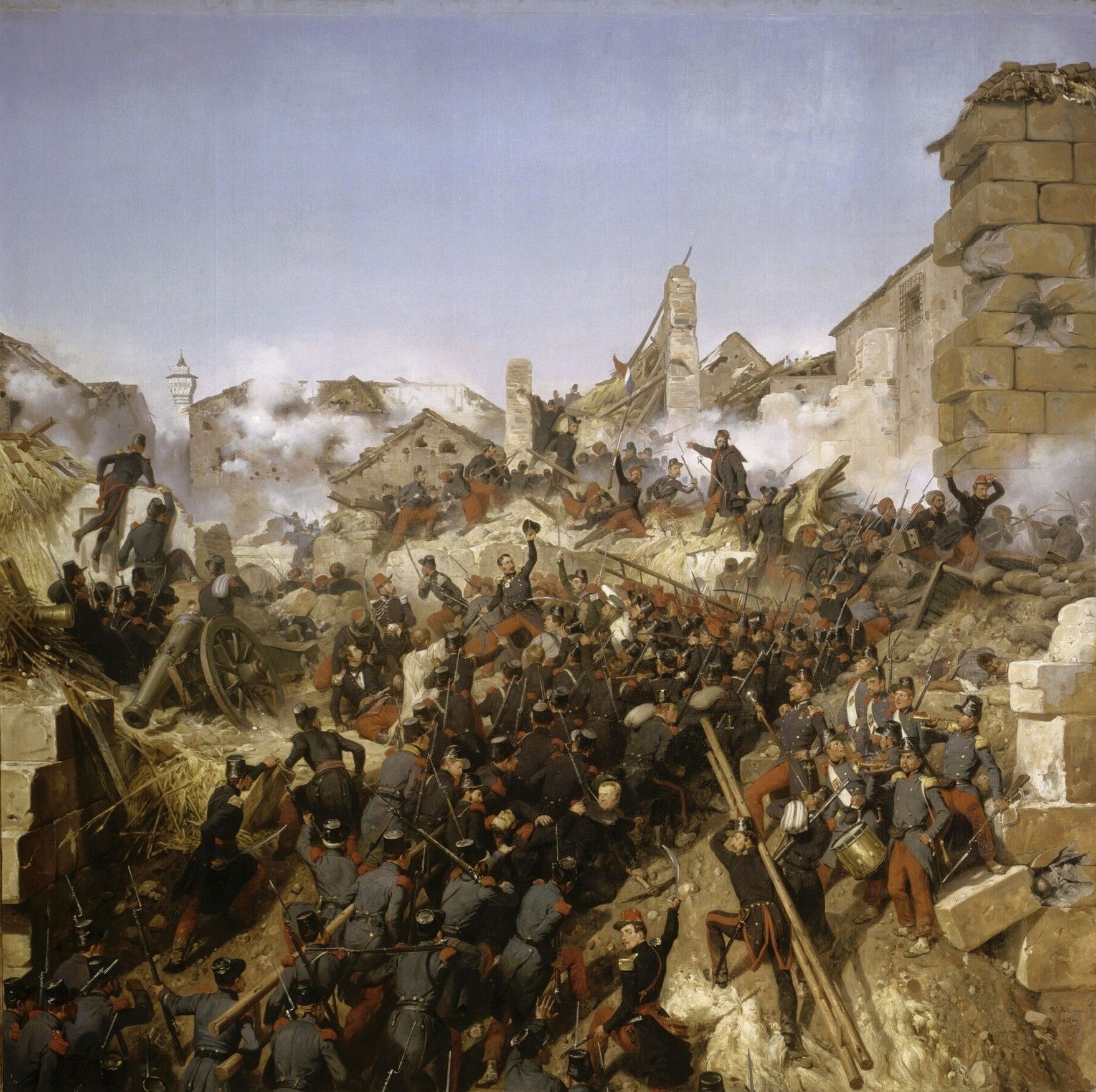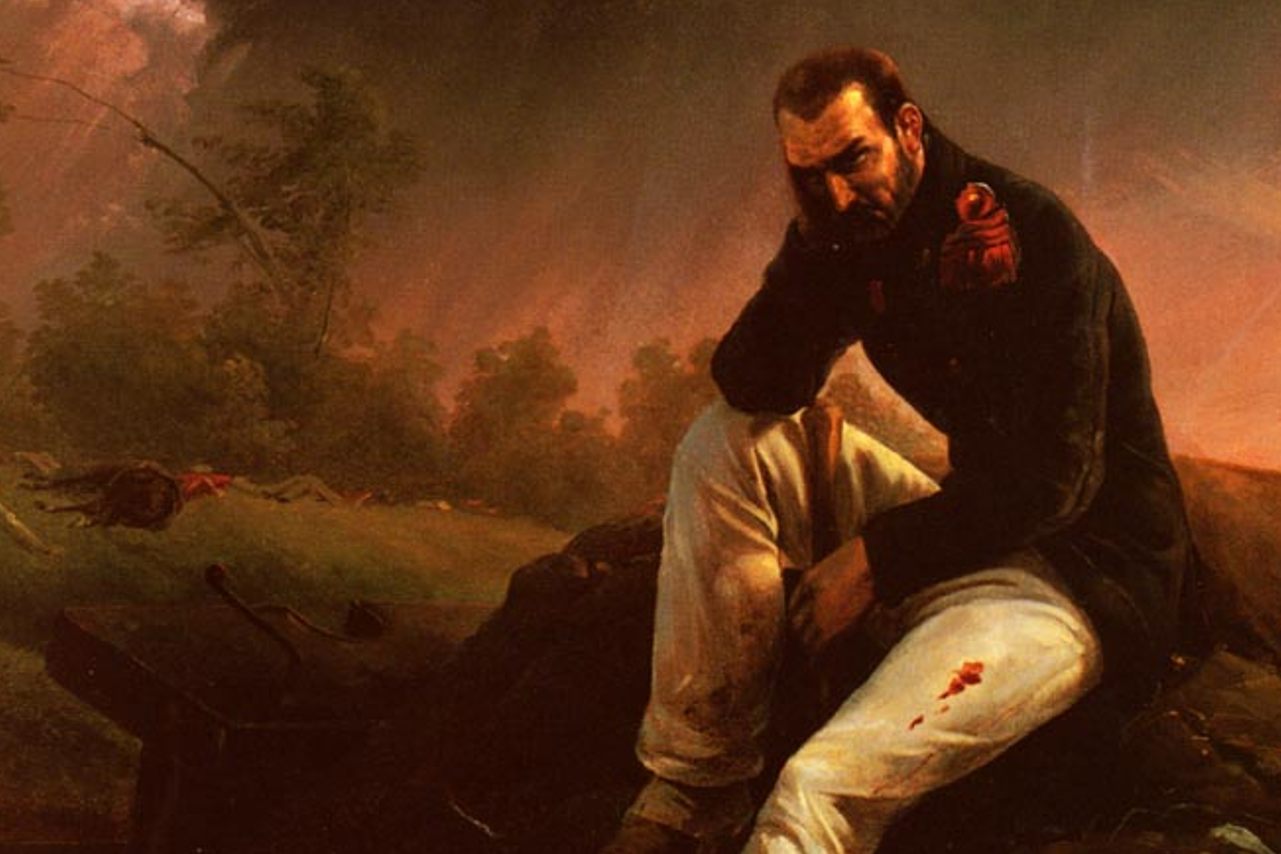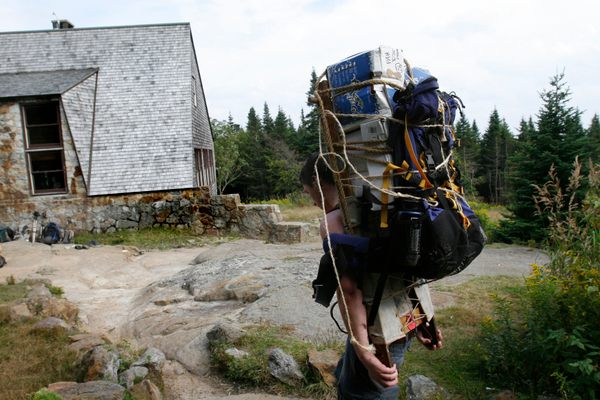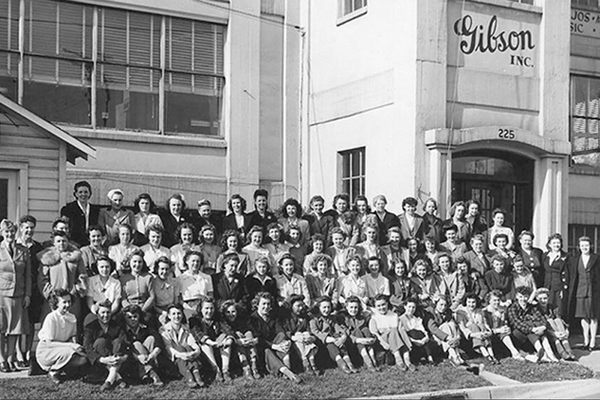The French Conquest of Algeria Was Sick With Nostalgia
The long, dark, painful history of an everyday emotion.
The French conquest of Algeria in the mid-19th century killed up to a third of the native population in three short decades—between 500,000 and 1 million people, according to Ben Kiernan’s Blood and Soil: A World History of Genocide and Extermination from Sparta to Darfur. The European settlers—who included Italians, Spaniards, and Maltese—at times had a similarly high mortality rate in what had devolved into a pestilential war zone. French settlers who arrived between 1848 and 1851 saw their numbers halved, for example, in part by vicious flare-ups of cholera and dysentery. In addition to dealing with disease and conflict, these settlers were almost uniquely ill-equipped for their task.
Though they were supposed to be tilling a new frontier—with little regard for the people who had already been living there—the colonists were disproportionately urban artisans with no experience handling plows. In many cases they were sent not for their skills, but to reduce unemployment rates back home. Some 14,000 Parisians went to rural Algeria in 1848 to face disease, miserable living conditions in barracks, and unfamiliar field work. These factors conspired to bring about another obstacle to the establishment of a French North Africa: clinical nostalgia, a diagnosable and dangerous longing for home that put colonists in hospital beds or sent them packing. It had become clear that if the French were going to conquer, exploit, and occupy Algeria, they were going to have to conquer a plague of homesickness first. The atrocities of the French colonial project, in the end, may have been intertwined with how a debilitating medical condition came to be seen as an emotion, so common and relatively harmless today.

The term “nostalgia” was coined in 1688 by Swiss medical student Johannes Hofer, in his dissertation, to diagnose the suffering of Swiss mercenaries abroad. It comes from the Greek nostos, for “homecoming,” and algos, for “pain”—literally, a painful desire for home. The idea existed long before Hofer: Nostos is commonly invoked in reference to The Odyssey, Homer’s tale of Odysseus’s by-any-means-necessary journey home from the Trojan War, but “the ‘algia’ part of it, the suffering part of it, was not yet something that people could conceive of,” says Thomas Dodman, a historian of France at Columbia University.
In Dodman’s analysis, this change has something to do with the evolution of European militaries in the 17th and 18th centuries. Smaller, more localized bands of soldiers were giving way to larger, consolidated, bureaucratic structures. With the professionalization of warfare came a new layer of alienation. Campaigns grew longer, conditions harsher, terms of service more indefinite. For centuries, says Dodman, European armies had consisted largely of contracted mercenaries recruited by feudal lords “for specific terms of service, for a duration, and then they go back home …” These armies, moreover, were “microsocieties,” often traveling with the soldiers’ spouses and children. “These are wars of kings instead of wars of nations,” says Dodman, and the pivot to the nation-state meant a pivot within the traditional military structure.
Though nostalgia first emerged as a Swiss idea—some doctors blamed it on brain damage from the clanging of Swiss cowbells—it gradually came to be seen as a French phenomenon. Dodman attributes this to several factors. Paris had grown into the hub of European medical science by the early 19th century, and a culture of diagnosis flourished. At the same time, the French military had developed into a more repressive, disciplinarian institution than its European counterparts, with a lottery draft system. These soldiers, says Dodman, were “reproducing with their own hands a world that then dominates them.” What doctors were diagnosing as nostalgia may have been closer to a kind of Marxian alienation than what we think of as homesickness today, but the soldiers still yearned for the lives they had left behind.
The world was changing, quickly and dramatically—a truth made clear by the massive, rapid cultural shifts of the French Revolution. Time itself seemed to be accelerating. In his 1991 paper Dying of the Past: Medical Studies of Nostalgia in Nineteenth-Century France, Michael S. Roth summarizes the deadly despair of a man whose house was going to be demolished. “His disease,” writes Roth, “is caused by progress.”

The nostalgic, as described by 19th-century doctors, was a morose and cryptic patient, seemingly beyond reach. “Everything one tells him to do he does mechanically,” wrote one doctor quoted in Roth’s article; the patient “obeys without murmuring, without complaining; he is the most docile of all creatures, but it is a docility with indolence …” As the doctor saw it, nostalgia presented itself as an abdication of the will. The patient “proffers not a single word of reproach against those who make his life miserable,” he continues, “everything is indifferent to him …” (One can perhaps see a continuity with this condition and both depression and post-traumatic stress disorder.)
Nostalgia was not seen then as a mere state of mind, however, but as a dangerous, contagious, “affective disorder that destroyed the body,” Roth writes. Indeed, according to the doctor, the patient’s “features become drawn, his face is creased with wrinkles, his hair falls out, his body is emaciated, his legs tremble under him; a slow fever saps his strength; his stomach refuses nourishment; a dry cough fatigues him; soon the decline of energy does not permit him to leave his bed.” Eventually, “the fever becomes even greater, and soon he succumbs.” Symptoms, Dodman writes in his book What Nostalgia Was: War, Empire, and the Time of a Deadly Emotion, included tachycardia, rashes, hyperhidrosis, trouble hearing, convulsions, heartburn, vomiting, diarrhea, rales, and wheezing. For all the suffering, the nostalgic did not even necessarily want to get better. “True nostalgics,” wrote Roth, “derived their only satisfaction from the symptoms of their disease and therefore strove to protect their longing, to concentrate all their energies on it.” One 19th-century medical journal, quoted by Roth, noted that the nostalgic “seeks solitude, during which he can caress his favorite chimera without any obstacle and feed his pain …”
Given the severity of the disease, nostalgia was considered a military threat of the highest order. According to Dodman’s book, epidemics had “allegedly decimated entire companies of conscripts at the outbreak of the revolutionary wars in the 1790s.” Decades later in Algeria, the mal du pays (“homesickness”) was rumored to have thwarted entire units. A military doctor there wrote in 1836 that he was losing as many as five men a day to the malady.
To some, this affliction seemed to be distinctively French, and stymied the country’s ability to compete with other European powers, particularly the United Kingdom. “Why don’t the French have good colonies?” asked political scientist Alexis de Tocqueville in 1833, quoted in Jennifer Sessions’s By Sword and Plow: France and the Conquest of Algeria. In his assessment, it was because “the Frenchman loves the domestic hearth … rejoices at the sight of his native parish, [and] cares about family joys like no other man in the world.” To be French, some insisted, was to know the pain of nostalgia as no other.

No one knows that exact pain today. Now, nostalgia is something very different, a kind of warm sustenance, a wistful appreciation for the past. It’s actually healthy: Clay Routledge, a psychologist at North Dakota State University who has published extensively on the emotion, says that nostalgia has been shown to raise self-esteem by making people feel like their lives are more meaningful. Nostalgia can bring sadness, but in a nourishing way.
Auguste Bourel-Roncière must have somehow seen into this future. In 1851, with the nostalgia outbreaks and other mishaps of 1848 still raw, he proposed to Napoleon III a solution to nostalgia that seemed to steer into it. His suggestion was the wholesale transfer of entire communities of Bretons—people from France’s rural northwest, where Bourel-Roncière was a notable local leader—to planned communities in Algeria. A joint-stock company would front two million francs so the state could build replica French villages to remake this colonial frontier into something familiar. Bourel-Roncière wasn’t alone. As Dodman explains in What Nostalgia Was, published earlier this year, similar proposals involving “Normands, Corréziens, Limousins, Savoyards”—other French rural communities—were brought forward as potential strategic solutions to France’s colonial quagmire. But people from remote areas had, since the days of the Swiss cowbells, been considered particularly susceptible to nostalgia, yearning for the familiar monotony of village life. If gritty Parisians had failed as settlers, what chance would naïve Bretons stand?
Bourel-Roncière thought they had everything the artisans of 1848 lacked—agricultural savoir-faire, an appreciation for the demands of rural living. And they would have their intact communities. Bourel-Roncière’s plan, writes Dodman, reimagined nostalgia as something “homeopathic”—the constant, drip-like exposure to home would anchor the settlers in their identity rather than estrange them from it, to promote a gentle pining rather than an aching need. The settlements also addressed burgeoning, sinister, racist fears, that French people in this hot climate might assimilate into the native population, and lose their inherent Frenchness. The transplanted French villages, it was thought, could protect the purity of French identity.
Ultimately, says Sessions, a historian at the University of Virginia, the policy was carried out on a relatively small scale and was short-lived. Its significance lies less in colonial history than in medical history, as the settlements acknowledged the need to treat nostalgia systemically, and documented real-time changes in how it was perceived.
The long process of nostalgia’s demedicalization is probably not fully knowable. Medicine itself was rapidly evolving then, as it is now, and even greater cultural changes were on the horizon. Dodman’s new book makes the case that French colonial policies and racism were, at least, integral pieces of the puzzle. The timing lines up: The French military’s last recorded case of nostalgia was in 1884, and by that time the diagnosis was exceedingly rare. It’s jarring to think that the nurturing, pleasurable sentimentality of today’s nostalgia might have such painful roots, but perhaps it shouldn’t be too surprising. More modern far-right politics—the Nazis are a prime example, and there are more contemporary analogues—has made dangerous and profitable use of nostalgia, to rally people around the defense of an allegedly threatened, so-called traditional identity.
Nostalgia, of course, is not the only condition to transform from a medical phenomenon into a more normalized experience. Hysteria is another prominent example, along with homosexuality. Surely there’s something we treat today which, one day, people will ignore, or even desire. “I’m absolutely convinced,” says Dodman, “that all disorders are historically specific and will come and go.” Some diseases, in other words, are not carried by pathogens, but by cultures.






























Follow us on Twitter to get the latest on the world's hidden wonders.
Like us on Facebook to get the latest on the world's hidden wonders.
Follow us on Twitter Like us on Facebook